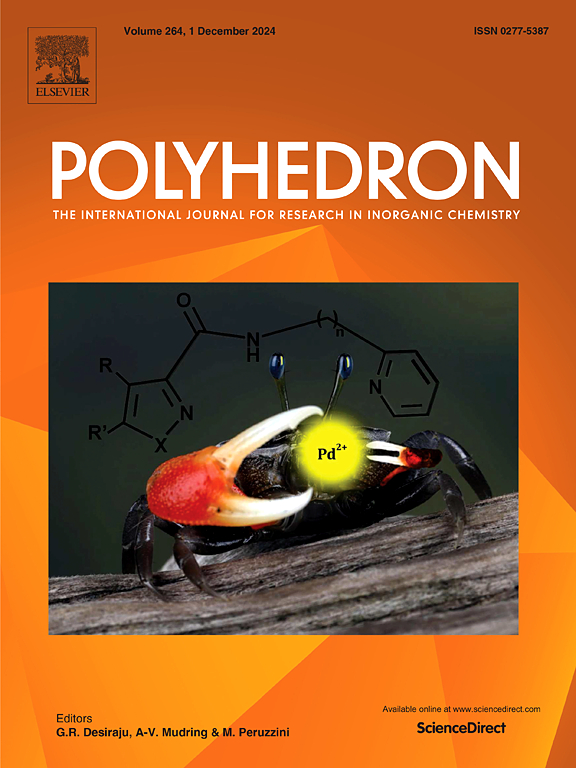DFT and experimental insights into a colorimetric pyridine-2,6-dicarboxamide chemosensor for selective Cu2+ detection
IF 2.6
3区 化学
Q2 CHEMISTRY, INORGANIC & NUCLEAR
引用次数: 0
Abstract
Developing efficient and selective chemosensors for metal ion detection is essential for environmental monitoring, biological applications, and industrial processes. Herein, we report the synthesis of a novel colorimetric chemosensor, PCNTH2, derived from pyridine-2,6-dicarboxylic acid and 5-nitrothiazol-2-amine, capable of selectively detecting Cu2+ ions with high sensitivity. The chemosensor exhibits a distinct colour change upon binding with the target ions, enabling naked-eye detection without sophisticated instrumentation. UV–Vis spectroscopic studies reveal strong and specific interactions between the chemosensor and Cu2+ ions, with detection limits in the micromolar range. Job's plot analyses indicate a 1:1 stoichiometric complexation, supported by density functional theory (DFT) calculations and spectral data. This work underscores the potential of PCNTH2 as a versatile platform for ion detection in diverse applications.

选择性检测Cu2+的比色吡啶-2,6-二甲酰胺化学传感器的DFT和实验见解
开发高效、选择性的金属离子化学传感器对环境监测、生物应用和工业过程至关重要。本文报道了一种新型比色化学传感器PCNTH2的合成,该传感器由吡啶-2,6-二羧酸和5-硝基噻唑-2-胺合成,能够以高灵敏度选择性检测Cu2+离子。化学传感器在与目标离子结合时显示出明显的颜色变化,无需复杂的仪器就可以进行肉眼检测。紫外可见光谱研究揭示了化学传感器与Cu2+离子之间强而特异性的相互作用,检测限在微摩尔范围内。在密度泛函理论(DFT)计算和光谱数据的支持下,Job的图分析表明了1:1的化学计量络合。这项工作强调了PCNTH2作为多种应用中离子检测的通用平台的潜力。
本文章由计算机程序翻译,如有差异,请以英文原文为准。
求助全文
约1分钟内获得全文
求助全文
来源期刊

Polyhedron
化学-晶体学
CiteScore
4.90
自引率
7.70%
发文量
515
审稿时长
2 months
期刊介绍:
Polyhedron publishes original, fundamental, experimental and theoretical work of the highest quality in all the major areas of inorganic chemistry. This includes synthetic chemistry, coordination chemistry, organometallic chemistry, bioinorganic chemistry, and solid-state and materials chemistry.
Papers should be significant pieces of work, and all new compounds must be appropriately characterized. The inclusion of single-crystal X-ray structural data is strongly encouraged, but papers reporting only the X-ray structure determination of a single compound will usually not be considered. Papers on solid-state or materials chemistry will be expected to have a significant molecular chemistry component (such as the synthesis and characterization of the molecular precursors and/or a systematic study of the use of different precursors or reaction conditions) or demonstrate a cutting-edge application (for example inorganic materials for energy applications). Papers dealing only with stability constants are not considered.
 求助内容:
求助内容: 应助结果提醒方式:
应助结果提醒方式:


